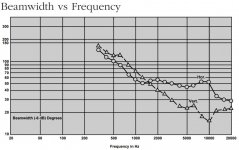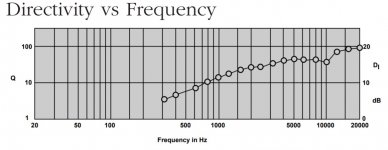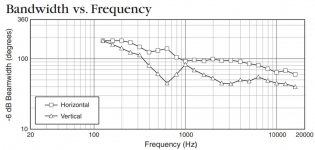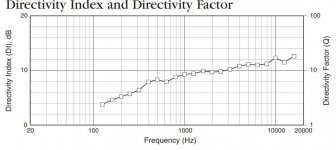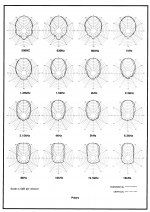1" : 18Sound XT1086

1.4" :18Sound XT1464

Both are not completely diffraction-free, but about the best of what is commercially available.
If you don't mind some beaming, you might want to look at FaitalPro horns.
This one is also very good and only $13:

1.4" :18Sound XT1464

Both are not completely diffraction-free, but about the best of what is commercially available.
If you don't mind some beaming, you might want to look at FaitalPro horns.
This one is also very good and only $13:
An externally hosted image should be here but it was not working when we last tested it.
Last edited:
The closest thing to a diffraction-free horn would be docali's spherical horn with a complete
roll-back:
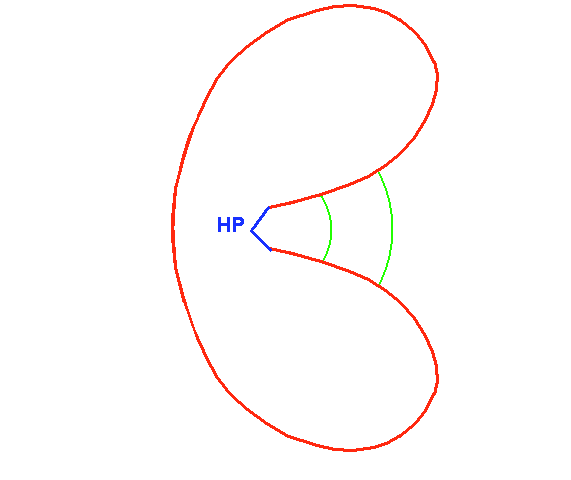
Or 270° roll-back culminating in a bullet shape, similar to this:

roll-back:
Or 270° roll-back culminating in a bullet shape, similar to this:

Last edited:
Even 'near diffraction free' still needs to be equalised as well as crossed. A waveguide with a bad response will surely sound bad.ready to be intigrated with a LF driver?
Member
Joined 2006
A guy, who also cooperated with mabat on the STH/ATH project, reworked the throat section of a 2" Aluminum horn - similar to the ZXPC 10x18.
Driver used is an older 2" B&C.
Could you share the link to this project, many thanks! 😀
Full horn loading to 400 Hz: https://en.toutlehautparleur.com/media/catalog/product/datasheet/jbl/2386A.pdf
GM
I had the 2380 clones in this Cornscala. I really liked the SQ of the D405 mid driver. Getting back to the 2386:
Wow, DI 10 at 800 Hz and climbing to DI 20 at 20 kHz.
Contrast that to JBL 2384, a 90 x 50 pattern.
I find the JBL 2384 90 x 50 pattern already too narrow and looking for more of a 100 x 100 CD pattern. I can't imagine the narrow beamwidth of a 40 x 20 pattern of the 2386 in a near field living room scenario. The 2386 is a long throw horn designed for stadiums and arenas...
Ro808, I had those QSC clones with a BMS 1" 4540nd that genuinely made it past 20 kHz and sounded like a tweeter instead of a horn. Should have kept them.
Attachments
Really interesting dual spider woofer, with one each side of the gap. Fist time i see this kind of arrangement.No, that's not what I am saying 😉
In fact, there's a very small company that made (or still makes) the SUP-T11.
Sony never produced any of their PA drivers and horns in house, instead they bought custom products from third party manufacturers, like McCauley.
The horn in the Strauss is not a 2386. When we look at pictures of the 2386 there is no diffraction slot and the horn is quite deep. The horn on the Strauss has a diffraction slot and isn't very deep.
Regards
Charles
Regards
Charles
I'm pretty sure its the 2382a......we talked about this loudspeaker a while ago about how it has a diffraction slotted horn but its still perceived well, today, even though...
Last edited:
Contrast that to JBL 2384, a 90 x 50 pattern.
But that's not just the 2384 is it?
Looks like the whole 4722 - and the dip in vertical beamwidth around 600 Hz is the interaction of the horn with the stacked woofers.
Or so I suspect, I have an idea about how to better optimise this, do you have any data on the 2384 alone?
Best wishes
David
Well I guess this is the dreaded waistbanding. From the pictures on the Speaker Exchange website I would quess the vertical opening to be around 12" which would equal Lambda/2 around 600 Hz.
In the horizontal plane it is less pronounced due to the fact that the vertical (i.e. left and right) edges are less sharp and the width is not constant over the whole height (PT waveguide). But there is still a slight depression a little lower in the diagram, although nothing to worry about.
Regards
Charles
In the horizontal plane it is less pronounced due to the fact that the vertical (i.e. left and right) edges are less sharp and the width is not constant over the whole height (PT waveguide). But there is still a slight depression a little lower in the diagram, although nothing to worry about.
Regards
Charles
...this is the dreaded waistband...
Hi Charles
Yes, horns can waistband but I suspect here the problem is made worse by the vertically stacked woofers in the 4722.
That is what I would like to confirm with Mitch.
He has a 2384 and I hope he has data for the horn alone.
In the horizontal plane it is less pronounced due to the fact...But there is still...a little lower...
You mean the small dip at 400 Hz?
This is below crossover so I think not horn related, maybe some minor contribution.
I think the lack of a waistband in the horizontal plane shows that with careful mouth transition there is minimal problem.
Hence my suspicion that the vertical waistband is, at least in part, woofer interaction.
But you are correct, the smaller available roundover in the vertical plane would increases the horn contribution.
Best wishes
David
Last edited:
I'm pretty sure its the 2382a......we talked about this loudspeaker a while ago about how it has a diffraction slotted horn but its still perceived well, today, even though...
The horn used in the Strauss SE-MF-2 and 2.1 is the JBL 2380A, 90x40° Flat front Bi-radial horn.

An externally hosted image should be here but it was not working when we last tested it.
The 2382A is 120x40°, which is visible in the widening of horizontal mouth 'walls', a shallower mouth overall and subsequently a longer slot > a narrower angle results in a deeper mouth. For this reason, in the 2386A the diffraction slot is almost gone. In docali's Selenium - a modified 2386A - there's no diffraction slot at all.
An externally hosted image should be here but it was not working when we last tested it.
Attachments
Last edited:
I find the JBL 2384 90 x 50 pattern already too narrow and looking for more of a 100 x 100 CD pattern. I can't imagine the narrow beamwidth of a 40 x 20 pattern of the 2386 in a near field living room scenario.
Hi Mitch,
40 x 20 is certainly a problem in any system, but 100 x 100 is wider than I think optimal, even in a small room. I would love to be able to use a narrower 70 x 70 device, but there isn't a feasible woofer that can do that except at >> 1 kHz. Hence 90 x 90 seems to be the highest DI that I found feasible to build cost effectively.
40 Years ago, 'they' tackled waistbanding and pattern flip quite effectively.
Speaking of constant coverage...
Is this the 2386 polar?
Member
Joined 2006
A guy, who also cooperated with mabat on the STH/ATH project, reworked the throat section of a 2" Aluminum horn - similar to the ZXPC 10x18.
Driver used is an older 2" B&C.
Possible that you could show me where this information came from? Thanks! 🙂
Is this the 2386 polar?
No, it's of a large format diffraction horn.
Dr. Geddes, are you familiar with the older B&C P series woofers?
No.
- Home
- Loudspeakers
- Multi-Way
- Is it possible to cover the whole spectrum, high SPL, low distortion with a 2-way?
